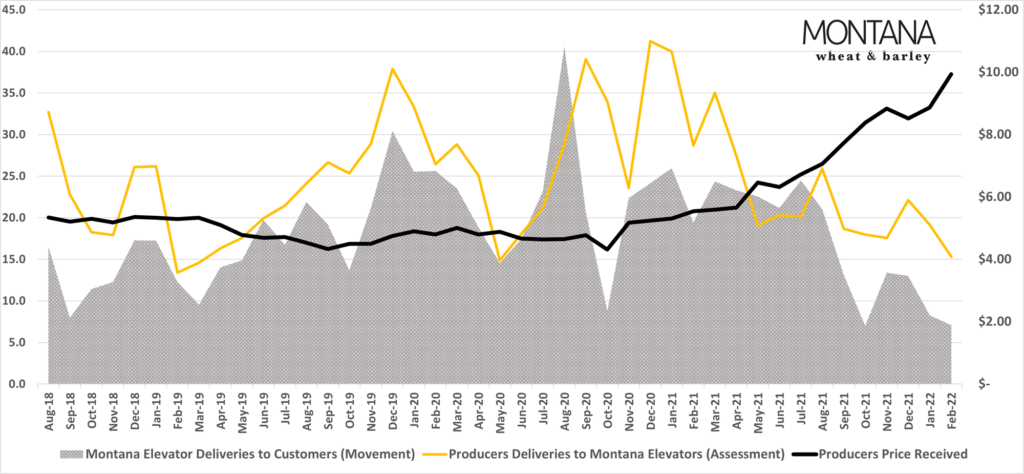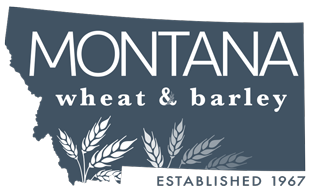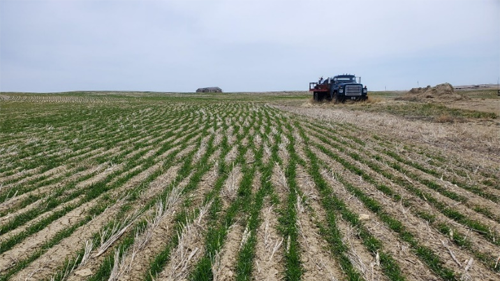The Montana Wheat & Barley Committee collects two unique data sets. Checkoff assessments are reported monthly and are shown below by the yellow line which is displayed as a million-bushel measurement. Additionally, elevators are required to report the volumes of grain leaving their locations as well as its destination. This is represented by the gray area on the graph and is also measured in million-bushel increments. For added comparison the average wheat price received by a Montana producer is the solid black line, measured in dollars per bushel, and is reported by the National Ag Statistics Service.

This data paints a unique picture of how grain and price interact. There are many takeaways from this graph; including the fact that Montana producers’ biggest delivery months, outside the harvest time spike, are December, January, and February. Elevators can attract producers with a basis change when shuttles are scheduled, but as you can see in the graph, they typically keep a healthy inventory. During a busy shuttle month with high stocks, the inverse can happen, resulting in a price bump i.e., May 2021.
Rewind to February 24 th, 2020, “The good ole days.” Two years ago, we had great spring moisture and the Phase 1 Chinese Trade Deal was signed. This resulted in 3.2 million metric tons of U.S. wheat sales to China. Three weeks later the US went into COVID-19 lockdown which led to economic volatility. Despite the uncertainty, Montana recorded one of its best crops ever. This was followed by the 2021 harvest, which was one of the worst droughts in the last five decades and set off a shockwave of tight supplies. This resulted in Montana losing around 50% of normal production, extremely high protein, and delayed shipping. Now jump to February 20, 2022, and the start of the Russian invasion of Ukraine. This conflict has led to some of the lowest grain volumes leaving the state since September of 2018.
Clearly, A LOT can happen in two years and producer mentalities can drastically change. Considering the uncertainty on the current world stage, with 30% of the world’s wheat production under siege in the Black Sea region, it seems Food Aid will play a critical short-term role. The Montana Wheat and Barley Committee applauds additional support from Washington DC Click Here.
The best way to keep momentum is to continue to encourage trade agreements and fill the needs of partner countries who depend on us for food security. Looking at the last four years one thing is clear, when the volume, price, and trade agreements fit, the Treasure State can supply big exports.

